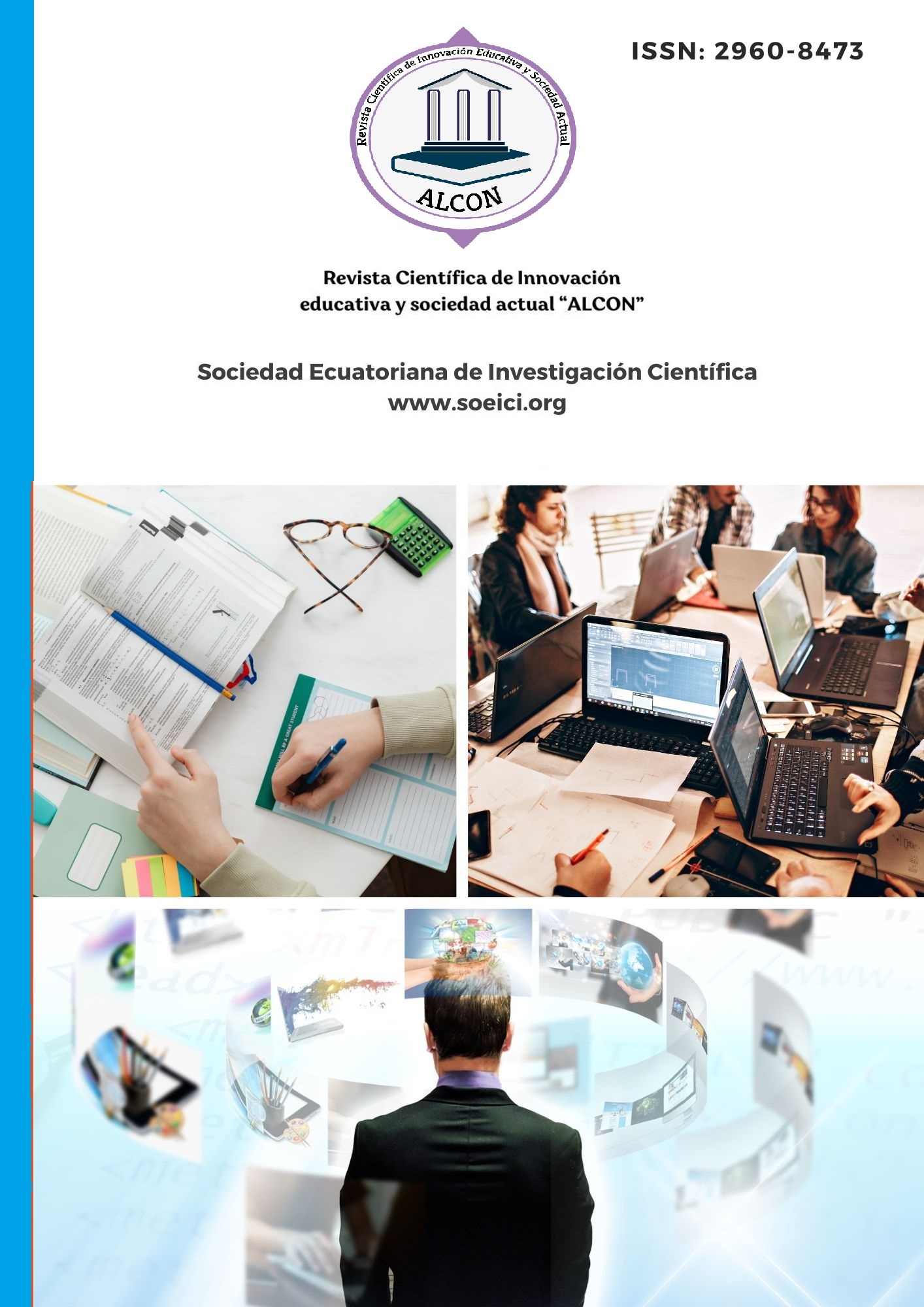Considerations on competencies in teaching and learning the English language
DOI:
https://doi.org/10.62305/alcon.v4i3.169Palabras clave:
competencies; teaching learning; English languageResumen
The objective of this article is to assess the competencies in the teaching-learning of the English language from a holistic approach. For this purpose, a bibliographical investigation is carried out on linguistic competencies understood as a systematic process that allows collecting, analyzing and synthesizing relevant information on the topic, arriving at the following conclusions: The development of the four linguistic skills (oral comprehension, written comprehension, oral expression and written expression) is essential for effective communication in English. Teaching should focus on developing all four skills in an integrated way, using a variety of authentic activities and materials. Teaching should focus on the development of communicative competence, using activities that simulate real communication situations. Authentic use of the language is essential for effective learning of English. Teaching must be sensitive to the different cultures and values of students. Teaching should foster learner autonomy, providing students with opportunities to set their own goals, plan their own learning, and evaluate their own progress. The use of innovative resources and methodologies can make teaching English more effective and motivating. In general, effective English teaching must consider the different competencies that students need to communicate effectively in a globalized world. Teaching must be comprehensive, authentic, culturally sensitive, autonomous and based on the use of innovative resources and methodologies.
Descargas
Citas
Benson, P. (2001). Autonomy in language learning and teaching. Language Teaching, 34(2), 127-147.
Black, P., & Wiliam, D. (1998). Inside the black box: Black and white thinking in education. King's College London School of Education.
Brown, H. D., & Hudson, T. (2009). Assessment of language learning. Oxford University Press.
Brown, H. D., & Skehan, P. (1998). Коммуникативная методика обучения языкам. Cambridge University Press.
Canale, M., & Swain, M. (1980). Theoretical perspectives on communicative competence. TESOL Quarterly, 14(4), 193-217.
Chamot, A. O., & O'Malley, J. M. (1994). Second language acquisition: Strategies for teachers. Heinle & Heinle.
Gay, G. (2000). Culturally responsive teaching: Theory, research, and practice. Teachers College Press.
Lamb, M. (2010). Autonomy: Supporting lifelong learning. Language Teaching Research, 14(2), 167-188.
Little, D. C. (2007). Rethinking autonomy in language learning: Towards a more comprehensive framework. Language Teaching Research, 11(2), 217-243.
Lynch, B., & McNamara, T. (2009). Language assessment principles and practices. Oxford University Press.
Harmer, J. (2001). The practice of English language teaching. Longman.
Hutchinson, T., & Waters, A. (2007). English for specific purposes: A new approach. Routledge.
Nunan, D. (2004). Task-based language teaching. Cambridge University Press.
Richards, J. C., & Rodgers, T. S. (2002). Approaches to language teaching. Cambridge University Press.
Weir, C. (2005). Language testing and assessment. Routledge
Warschauer, M., & Healey, D. (1998). Computers and language learning: An overview. Language Teaching, 31(2), 57-71.
Publicado
Cómo citar
Número
Sección
Licencia
Derechos de autor 2024 Revista Científica de Innovación Educativa y Sociedad Actual "ALCON"

Esta obra está bajo una licencia internacional Creative Commons Atribución-NoComercial-CompartirIgual 4.0.









